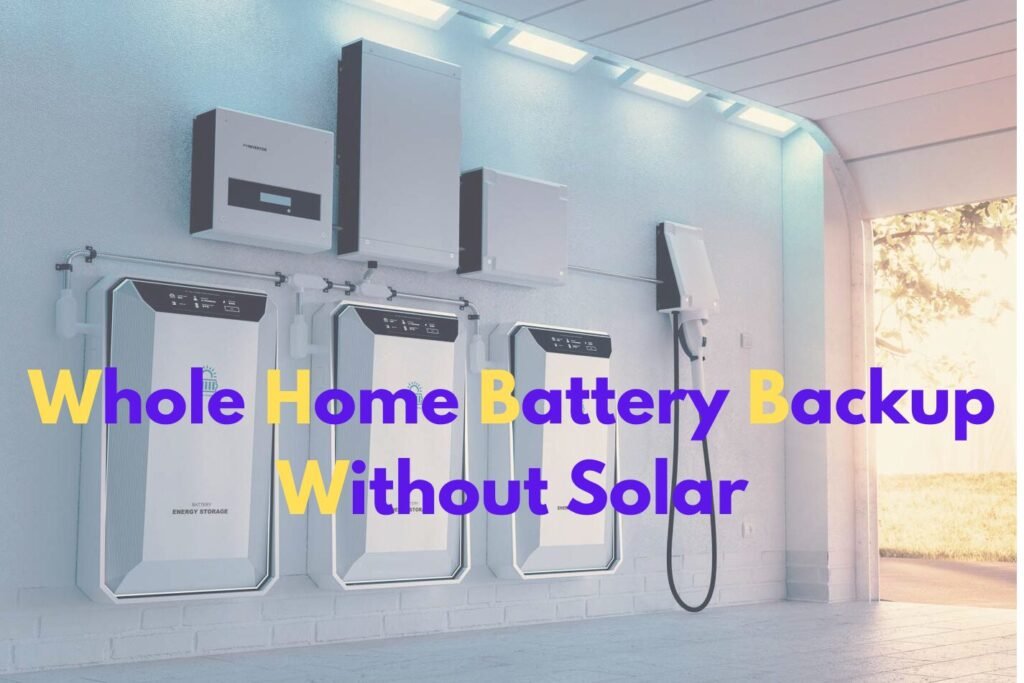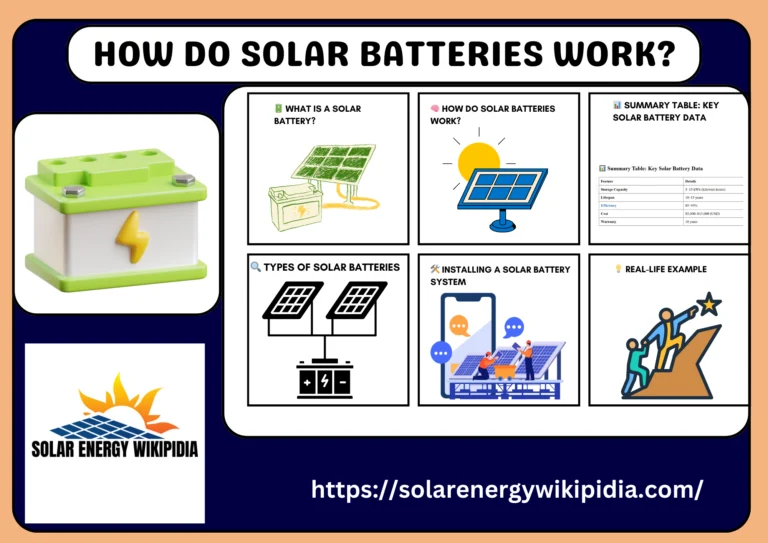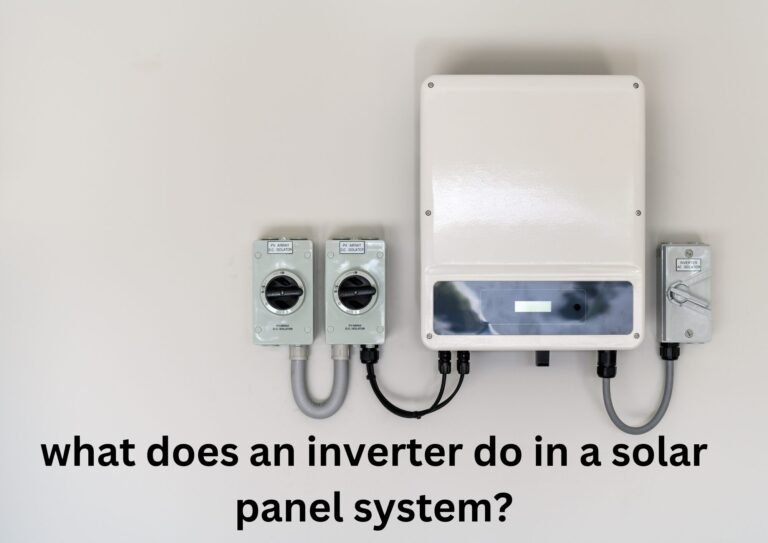
In today’s world, having a reliable power source is more important than ever. Homeowners are looking for smarter ways to stay powered during outages and cut down on energy costs. That’s where a whole home battery backup without solar comes in an efficient solution to keep your home running without depending on the grid or solar panels. This guide explores how these backup systems work, their benefits, and how they can save you money while ensuring energy independence.
Whether you’re looking to safeguard your home during storms, enhance your energy security, or simply take control of your power supply, the options available today are diverse and accessible. From cutting-edge technology to practical installation tips, this comprehensive resource will empower you to transform your home into a beacon of energy resilience. Join us as we explore how you can harness the power of battery backup systems, ensuring your home stays lit, comfortable, and always ready to face whatever challenges come your way.
Table of Contents
Understanding the Need for Battery Backup Systems
Power outages are happening more often due to bad weather, old power lines, and problems with the electricity grid. Traditional generators are common but can be noisy, need fuel, and require a lot of upkeep. Whole home battery backup systems are a quieter, easier, and low-maintenance alternative.
These battery systems don’t just provide power during blackouts they also help lower electricity bills by storing energy when it’s cheaper and using it when rates are higher. They also make homes less dependent on the power grid. Even without solar, they can charge when electricity demand is low or connect to other clean energy sources, making them a smart and eco-friendly choice for homeowners.

How Whole Home Battery Backup Works
At its core, a whole home battery backup system consists of one or more batteries that store electrical energy for later use. These batteries are connected to the home’s electrical system and are charged either by drawing power from the grid or from alternative energy sources. During a power outage, the system automatically switches to battery power, ensuring that essential appliances and systems remain operational. This seamless transition is managed by an inverter, which converts the stored DC (direct current) power in the batteries to AC (alternating current) power used by household appliances.
The sophistication of modern battery backup systems allows for intelligent energy management. Advanced systems can be programmed to prioritize critical loads, such as medical equipment, refrigerators, and lighting, ensuring that these remain powered even during extended outages. Additionally, some systems offer features like remote monitoring and control, allowing homeowners to manage their energy usage from a smartphone or computer. This level of control can be particularly beneficial in optimizing energy consumption and extending the battery life during prolonged outages.
Another crucial aspect of whole home battery backup systems is their scalability. Homeowners can start with a smaller system and expand it over time as their energy needs or budget allows. This modular approach makes battery backup solutions accessible to a wider range of households, from small apartments to large family homes. Moreover, modern systems are designed to integrate seamlessly with existing electrical infrastructure, minimizing the need for extensive modifications or complex installations.
Types of Battery Technologies for Home Use
When it comes to selecting a battery backup system, understanding the different types of battery technologies available is crucial. The most common types used in residential settings are lithium-ion, lead-acid, and newer technologies like solid-state batteries. Each type has its own set of characteristics, advantages, and limitations, making them suitable for different applications and budgets.
Lithium-ion batteries are currently the most popular choice for residential battery backup systems. Known for their high energy density, long cycle life, and efficiency, lithium-ion batteries are well-suited for applications that require frequent cycling and high power output. They are also relatively lightweight and compact, making them easier to install and integrate into existing homes. However, they come with a higher upfront cost compared to other battery types, which can be a consideration for budget-conscious homeowners.
Lead-acid batteries, on the other hand, have been used for decades in various applications and are known for their reliability and cost-effectiveness. While they have a lower energy density and shorter cycle life compared to lithium-ion batteries, they are significantly cheaper and more widely available. Lead-acid batteries are a good option for homeowners looking for a more affordable solution, especially in applications where the battery is not cycled frequently. However, they require more maintenance and have a shorter lifespan, which can add to the long-term costs.
Emerging technologies, such as solid-state batteries, are also making their way into the residential market. These batteries promise higher energy densities, longer lifespans, and improved safety compared to traditional lithium-ion batteries. While still in the early stages of commercialization, solid-state batteries have the potential to revolutionize the battery backup market by offering superior performance and safety features. However, they are currently more expensive and less widely available, making them a less practical option for most homeowners at this time.
Factors to Consider When Choosing a Battery Backup System
Selecting the right battery backup system for your home involves several critical factors that need to be carefully evaluated. One of the most important considerations is the system’s capacity, which determines how long the battery can power your home during an outage. This is typically measured in kilowatt-hours (kWh) and should be matched to your home’s energy needs. To accurately assess your requirements, you can review your electricity usage history and identify the critical loads that must remain powered during an outage.
Another key factor is the system’s power output, measured in kilowatts (kW), which indicates the maximum amount of power that the battery can deliver at any given time. This is especially important for homes with high-power appliances or systems that require a significant amount of energy to operate. Ensuring that the battery backup system can handle these loads without overloading is crucial for maintaining the functionality of your home during an outage.
Cost is also a significant consideration when choosing a battery backup system. This includes not only the initial purchase price but also installation costs, maintenance expenses, and potential savings from reduced energy bills. It is essential to evaluate the total cost of ownership over the system’s lifespan to determine its financial viability. Additionally, some homeowners may be eligible for incentives or rebates that can help offset the initial costs, so it is worth exploring these options as well.

Installation Process for Whole Home Battery Backup Solutions
The installation process for a whole home battery backup system involves several steps and requires the expertise of a licensed electrician or professional installer. The first step is a thorough assessment of your home’s electrical system and energy needs. This involves evaluating the existing infrastructure, identifying critical loads, and determining the optimal location for the battery system. This assessment helps ensure that the system is designed and installed to meet your specific requirements.
Once the assessment is complete, the installation process begins with the preparation of the installation site. This may involve installing mounting hardware, running electrical conduits, and making any necessary modifications to the existing electrical panel. The battery units are then installed and connected to the home’s electrical system, typically through an inverter that manages the conversion of DC power to AC power. The inverter is also responsible for managing the charging and discharging cycles of the battery, ensuring optimal performance and efficiency.
After the physical installation is complete, the system is configured and tested to ensure it is operating correctly. This includes programming the battery management system, setting up any monitoring or control software, and conducting a series of tests to verify the system’s functionality. The installer will also provide training on how to operate and maintain the system, ensuring that homeowners are fully prepared to manage their new battery backup solution. This comprehensive process ensures that the system is installed safely and performs reliably during power outages.
Maintenance and Lifespan of Battery Backup Systems
Keeping a whole home battery backup without solar in good condition is key to ensuring its longevity and performance. While these systems require less upkeep than traditional generators, regular monitoring and maintenance are still important.
For lithium-ion batteries, maintenance mainly involves tracking charge and discharge cycles and ensuring the system operates within recommended limits. Many modern battery backup systems include built-in monitoring features that provide real-time data and alerts, making it easier to manage system health.
Lead-acid batteries, however, need more attention. Homeowners should regularly check electrolyte levels, clean terminals, and keep the batteries in a well-ventilated space to prevent overheating. Routine inspections help catch potential problems early, extending battery life and ensuring reliable backup power when needed.
Battery lifespan varies based on type and upkeep. Lithium-ion batteries typically last 10 to 15 years, while lead-acid batteries may last 5 to 7 years. With advancements in technology, solid-state batteries could exceed 20 years. No matter the battery type, following manufacturer guidelines and using the system properly is essential for maximizing performance and durability.

Cost Analysis: Is a Whole Home Battery Backup Worth It?
Determining whether a whole home battery backup system is worth the investment requires a comprehensive cost analysis that takes into account several factors. The initial cost of the system, including the batteries, inverter, and installation, is the most significant upfront expense. While lithium-ion systems are more expensive initially, their longer lifespan and lower maintenance costs can make them more cost-effective in the long run. Conversely, lead-acid systems have a lower upfront cost but may incur higher maintenance and replacement expenses over time.
In addition to the initial costs, it is essential to consider the potential savings on energy bills. By optimizing energy usage and taking advantage of off-peak electricity rates, homeowners can reduce their overall energy costs. The extent of these savings will depend on the local electricity rates, the home’s energy consumption patterns, and the efficiency of the battery backup system. Over time, these savings can significantly offset the initial investment, making the system more financially viable.
Another important aspect of the cost analysis is the value of energy security and peace of mind. For many homeowners, the ability to maintain power during outages and reduce dependence on the grid is worth the investment. This is especially true in areas prone to frequent power disruptions or for households with critical energy needs. Additionally, some homeowners may be eligible for financial incentives, rebates, or tax credits that can help reduce the overall cost of the system, further enhancing its financial viability.
Conclusion and Future Trends in Battery Backup Solutions
As we look to the future, the demand for whole home battery backup without solar is expected to rise as more homeowners seek reliable energy solutions. Advances in battery technology, such as solid-state batteries and improvements in lithium-ion and lead-acid systems, are making these backup solutions more efficient, reliable, and affordable. With these innovations, whole home battery backup without solar will become a more practical and accessible option, giving homeowners greater energy independence and resilience against power outages.
Another exciting trend is the integration of battery backup systems with smart home technologies and renewable energy sources. While this guide focuses on non-solar solutions, the potential to connect battery systems with other renewable sources, such as wind or hydro, offers additional opportunities for sustainable energy management. Smart home integration allows for more sophisticated energy management, enabling homeowners to optimize their energy consumption and further enhance their energy independence.
In conclusion, a whole home battery backup system is a smart, efficient, and eco-friendly way to keep power on during outages and manage energy use. By learning about different battery options, considering key factors when choosing a system, and following best practices for setup and maintenance, I can make sure I pick the right solution for my home. As technology improves, battery backup systems will only get better, giving me even more control, savings, and energy independence.








